Hi there, pet lovers! 🕷️
For those who crave an exotic, awe-inspiring pet that pushes the boundaries of conventional pet-keeping, the Goliath Birdeater (Theraphosa blondi) stands as one of the most fascinating—and intimidating—arachnids available. Known as the largest spider in the world by mass, this tarantula is a true marvel of nature.
But is the Goliath Birdeater the right pet for you? In this detailed review, we’ll explore its temperament, care requirements, health considerations, availability, and costs. Whether you’re a seasoned tarantula keeper or a curious beginner, this guide will help you decide if this colossal spider belongs in your home.
Overview
The Goliath Birdeater is a New World tarantula native to the rainforests of South America. Despite its dramatic name, it rarely eats birds—instead, it primarily feeds on insects, small vertebrates, and other invertebrates. Here’s a quick summary of what makes this spider unique:
- Handling and Temperament: Not recommended for handling; defensive and prone to kicking urticating hairs.
- Care and Maintenance: Moderate difficulty—requires stable humidity, a large enclosure, and proper heating.
- Health and Durability: Generally hardy but fragile due to size; sensitive to falls and improper humidity.
- Availability: Found in the pet trade, but captive-bred specimens are preferred over wild-caught.
- Cost: Moderate initial cost for the spider, with higher enclosure and setup expenses.
- Overall: A spectacular but demanding pet best suited for experienced or dedicated keepers.
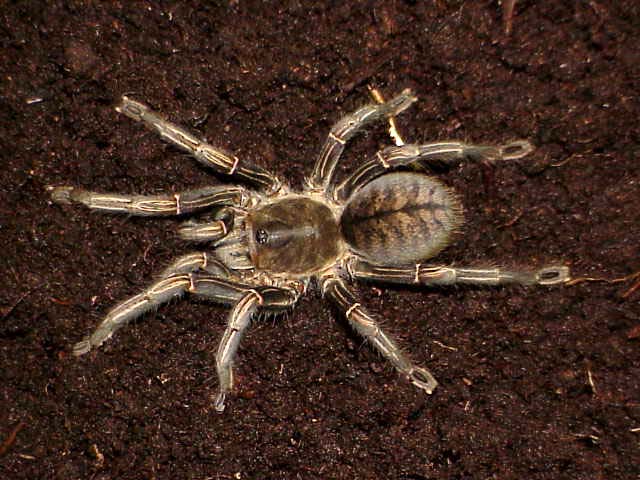
Why Choose a Goliath Birdeater?
The Goliath Birdeater is not a pet for everyone, but for the right keeper, it offers an unmatched sense of wonder. Here’s why some enthusiasts are drawn to this species:
- Sheer Size: With a leg span of up to 11 inches and a body the size of a human hand, it’s the heaviest spider on Earth.
- Low Maintenance (Compared to Vertebrates): No daily feeding, no complex social needs—just a well-set-up enclosure.
- Fascinating Behaviors: From burrowing to stridulation (hissing), this spider is full of surprises.
- Long Lifespan: Females can live 15-20 years, making them a long-term commitment.
However, this species isn’t beginner-friendly. Its defensive nature, fragility, and specialized care mean it’s best for those who already have experience with tarantulas.
Handling and Temperament
Defensive, Not Aggressive
The Goliath Birdeater does not seek confrontation, but it has multiple lines of defense:
- Urticating Hairs – When threatened, it kicks barbed hairs from its abdomen, which can cause itching, rashes, or even respiratory issues if inhaled.
- Threat Postures – It may rear up, exposing its fangs, or stridulate (hiss) by rubbing its legs together.
- Biting (Rarely) – While its venom is not medically significant, its large fangs (up to 1 inch) can deliver a painful puncture.
Handling? Not Recommended
Unlike some docile tarantulas (like the Mexican Red Knee), the Goliath Birdeater is not a hands-on pet. Reasons to avoid handling:
- Fragility: A fall from even a short height can be fatal due to its heavy body.
- Stress: Frequent handling can lead to defensive behaviors and premature hair-kicking.
- Risk to Keeper: Those with allergies or asthma should avoid exposure to urticating hairs.
For those who still want interaction, observing its natural behaviors (hunting, burrowing) is far more rewarding.
Care and Maintenance
Enclosure Setup
A proper habitat is critical for this species.
- Size: Adults need a minimum 20-gallon tank (horizontal space preferred).
- Substrate: 5-6 inches of moist coconut fiber or peat moss to allow burrowing.
- Hides: Provide cork bark, half-logs, or artificial caves for security.
- Climbing? No—this is a terrestrial species. Avoid tall decor to prevent falls.
Humidity and Temperature
- Humidity: 70-80%—mist the enclosure 2-3 times weekly (avoid direct spraying on the spider).
- Temperature: 75-82°F (24-28°C)—use an overhead heat mat (never under-tank) with a thermostat.
Feeding
Despite its name, birds are not a regular part of its diet.
- Primary Diet: Dubia roaches, crickets, and superworms (2-3 times weekly for juveniles, weekly for adults).
- Occasional Treats: Pinkie mice (rarely)—only for large adults and fully thawed to avoid injury.
- Water: A shallow dish should always be available.
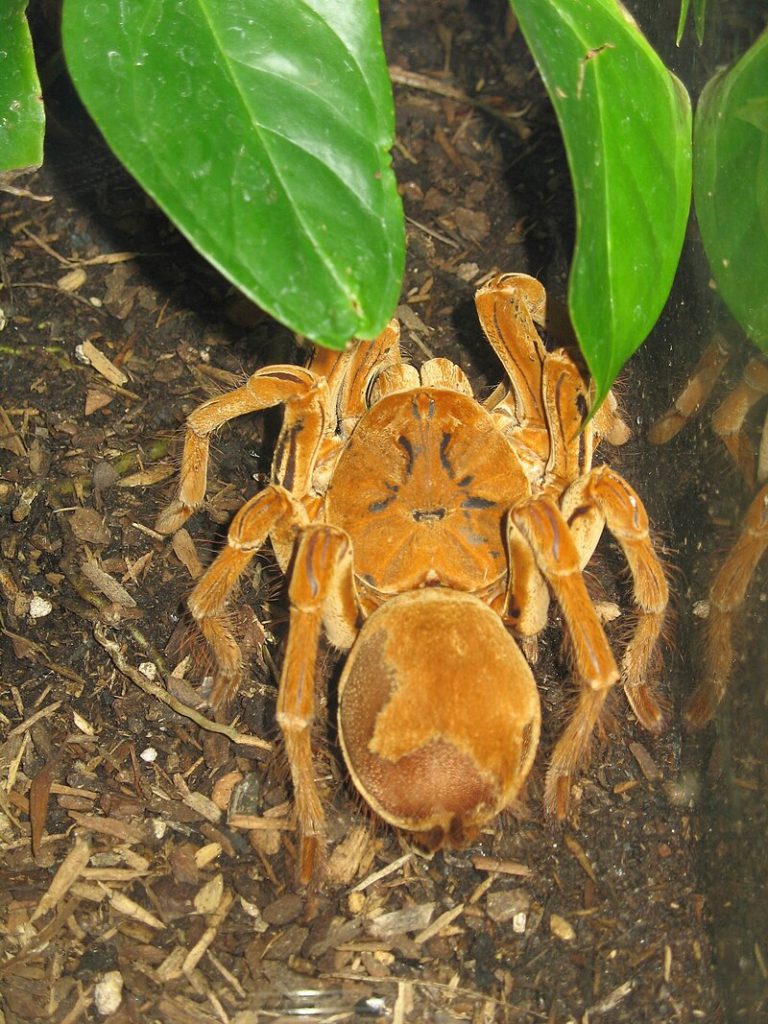
Health and Durability
Common Health Issues
- Dehydration: Signs include a shriveled abdomen—increase humidity.
- Molting Problems: High humidity is crucial—never disturb a molting spider.
- Falls & Injuries: A terrestrial setup minimizes risks.
Preventative Care
- Regularly check for mites or mold.
- Avoid overfeeding—obesity can shorten lifespan.
- Quarantine new feeders to prevent parasite transmission.
Availability and Cost
Where to Buy
- Reputable Breeders: The best source for captive-bred specimens (healthier, more ethical).
- Reptile Expos: A chance to inspect the spider before purchase.
- Online Retailers: Ensure they have positive reviews and live arrival guarantees.
Cost Breakdown
- Spider: $100 to $300 (captive-bred juveniles).
- Enclosure Setup: $150 to $300 (tank, substrate, heating, decor).
- Ongoing Costs: $10 to $20/month (feeders, substrate replacements).
Pros and Cons
Pros
✅ One of the most impressive display animals.
✅ Low feeding frequency compared to mammals/reptiles.
✅ Long lifespan (females live 15+ years).
✅ Captive breeding reduces wild collection.
Cons
❌ Not handleable—strictly a “look, don’t touch” pet.
❌ High humidity requirements can be tricky to maintain.
❌ Large size means bigger enclosures and more space.
❌ Urticating hairs can cause discomfort.
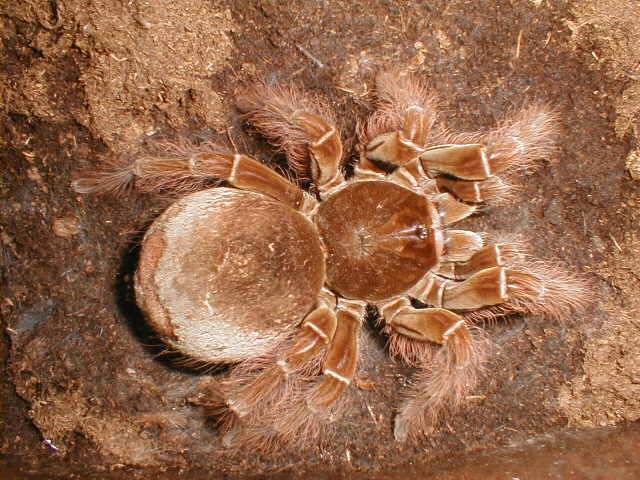
Final Thoughts
The Goliath Birdeater is a jaw-dropping pet, but it’s not for the faint of heart. Its care demands and defensive nature make it best suited for experienced keepers who appreciate its natural behaviors without needing hands-on interaction.
If you’re ready for the challenge, this gentle giant of the arachnid world will reward you with years of fascinating observations. For those seeking a more interactive or beginner-friendly tarantula, species like the Brazilian Black or Curly Hair Tarantula may be better choices.
Have you kept a Goliath Birdeater? Share your experiences below!
For more in-depth tarantula care guides, stay tuned—we’ll be covering more species soon! 🕷️

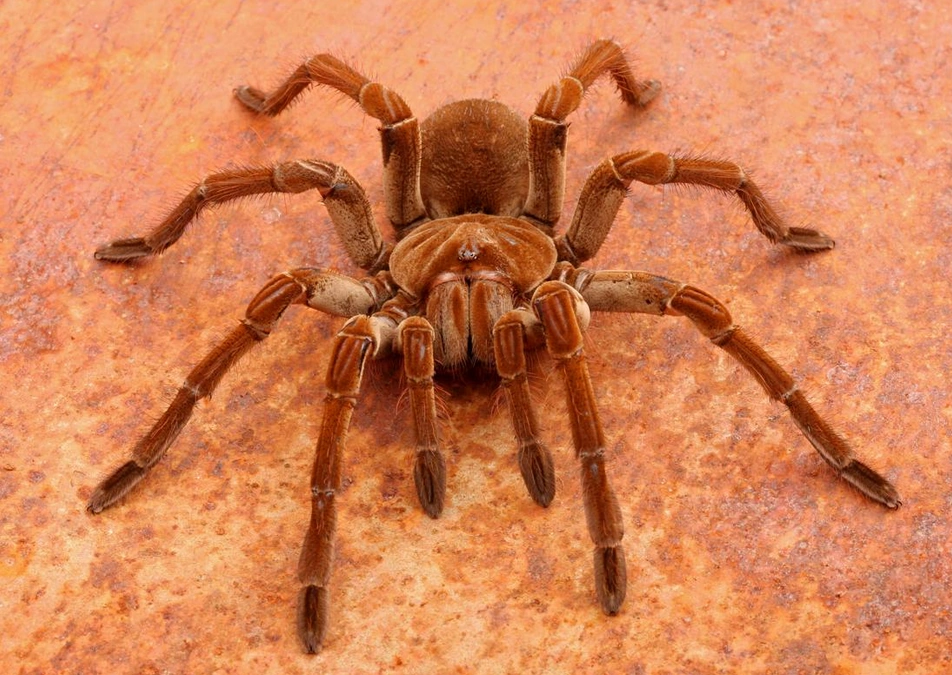

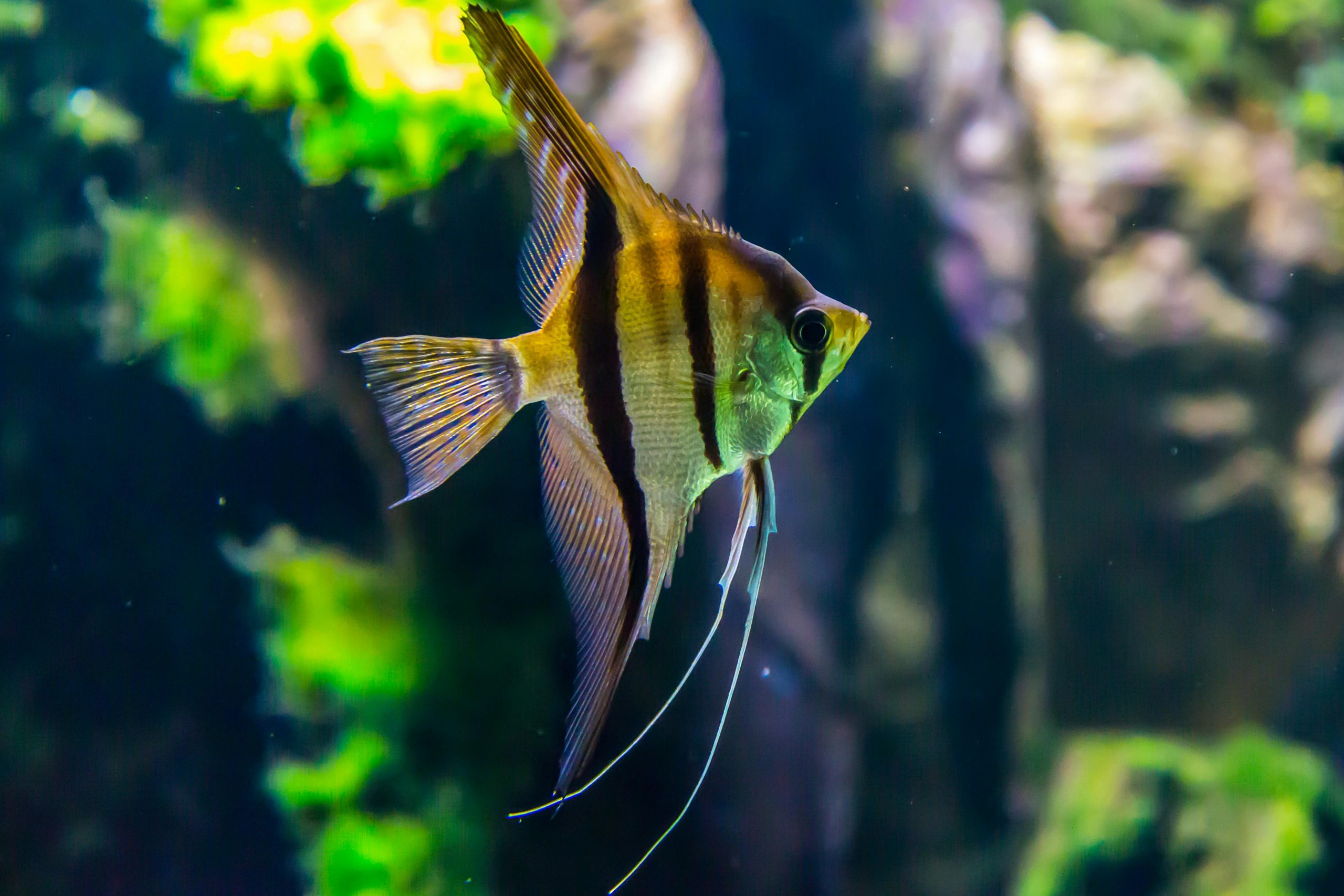
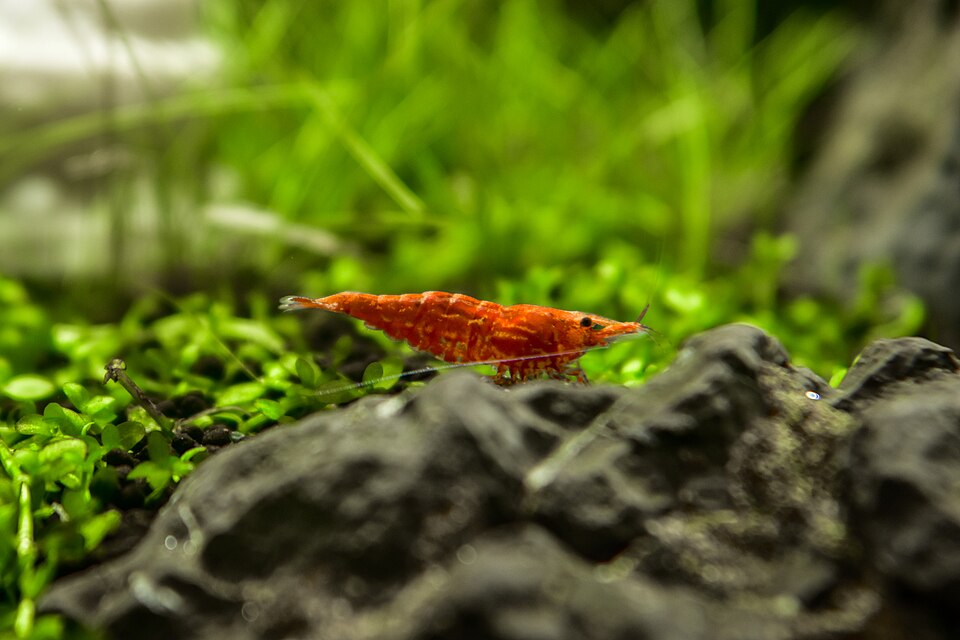


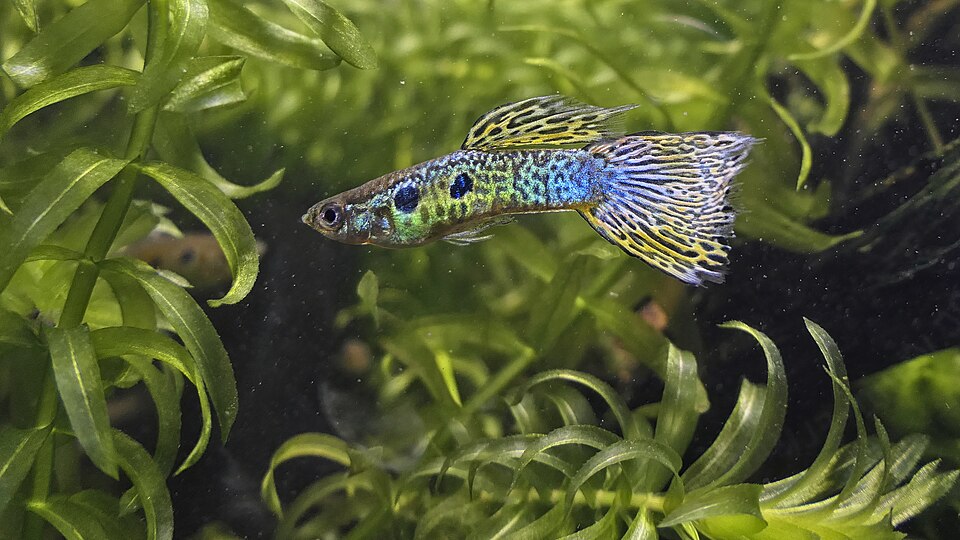
Leave a Reply